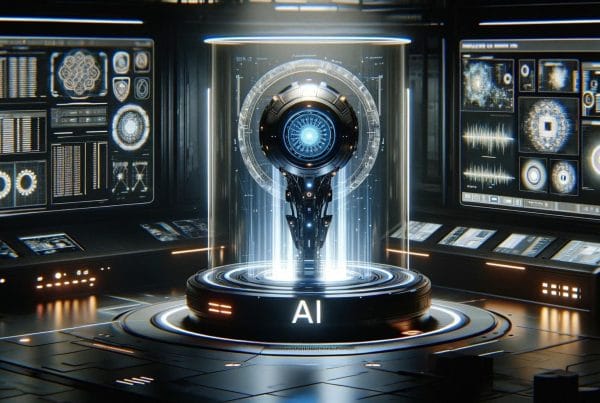Overview
With the emergence of several AI essay checkers, many tools have now been developed to rewrite AI generated content to bypass AI detection tools.
These AI humanizers go a few steps beyond the traditional quillbot paraphrasing technique we reviewed in the past.
In this article, we’ll review a few of the tools claiming to bypass AI detectors and put them to the test against Winston AI.
How do AI Humanizers work?
AI Humanizers will take any output generated from an AI chatbot, and rewrite it in a way that is supposedly undetectable by AI checkers. This process could mean that the output is paraphrased several times until it passes this tool’s internal AI detection solution.
Why are AI Humanizers emerging?
Many copywriters and students are using ChatGPT and other such tools to write for them. And as teachers and publishers are now finding ways to detect synthetic content with the help of AI detectors like Winston AI, many companies have flooded the market with the promise of re-wording their ChatGPT output in a way that would bypass AI detection tools.
Plagiarism-Remover
The first tool we tested called Plagiarism-Remover is free to use. We ran a ChatGPT output on George Washington. The tool works fast, and no account is needed, which is convenient.

We then took this output and ran it in HuggingFace’s free AI detection tool, which returned a 15% “Real” score. This is especially disappointing, since this free tool is trained on GPT-2 data, and is notoriously easy to bypass, even without a Humanizer.
We also tested the new output in Winston AI, which flagged it as AI generated.
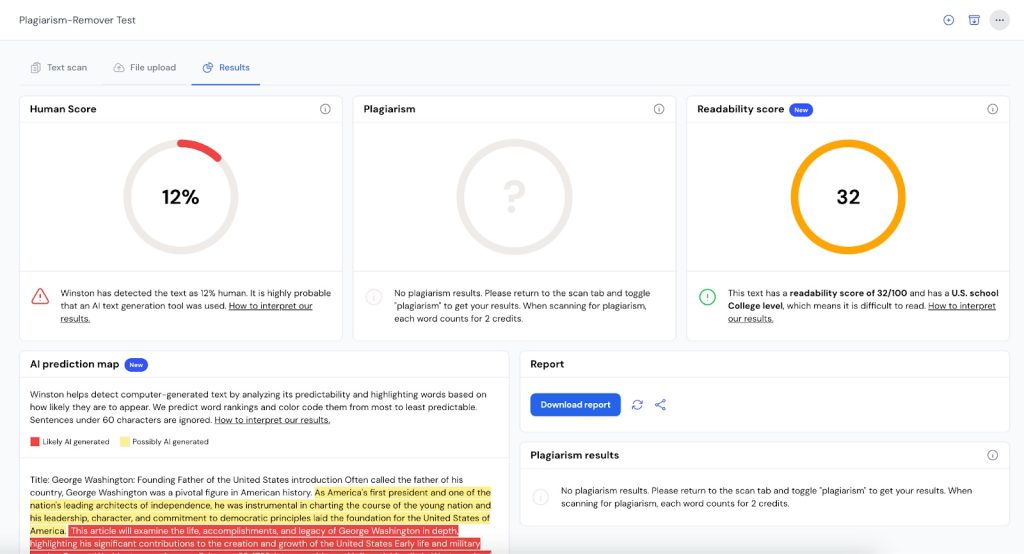
Netus AI
Netus is another tool gaining traction with the promise of bypassing all popular AI content detection tools. They offer a free trial so you can try their AI bypasser V1 and V2.
We ran another essay generated by ChatGPT(3.5) on Plato. The original output scored 0% human on Winston AI, so we tried putting this content through Netus AI to see if we could bypass our detection systems.
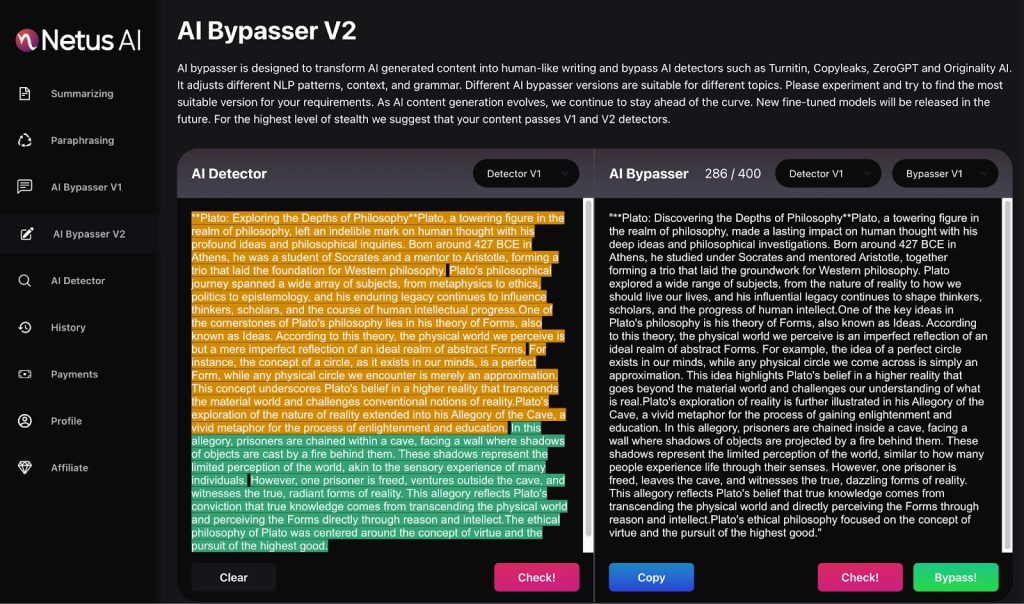
We can see the original ChatGPT on the left has been paraphrased indeed on the right. So Netus is definitely doing some work to try and change the synthetic content. We ran the content through Winston AI to see if the new output would bypass its AI checker. The result was quite obvious: it failed completely at its task and was completely flagged as AI.
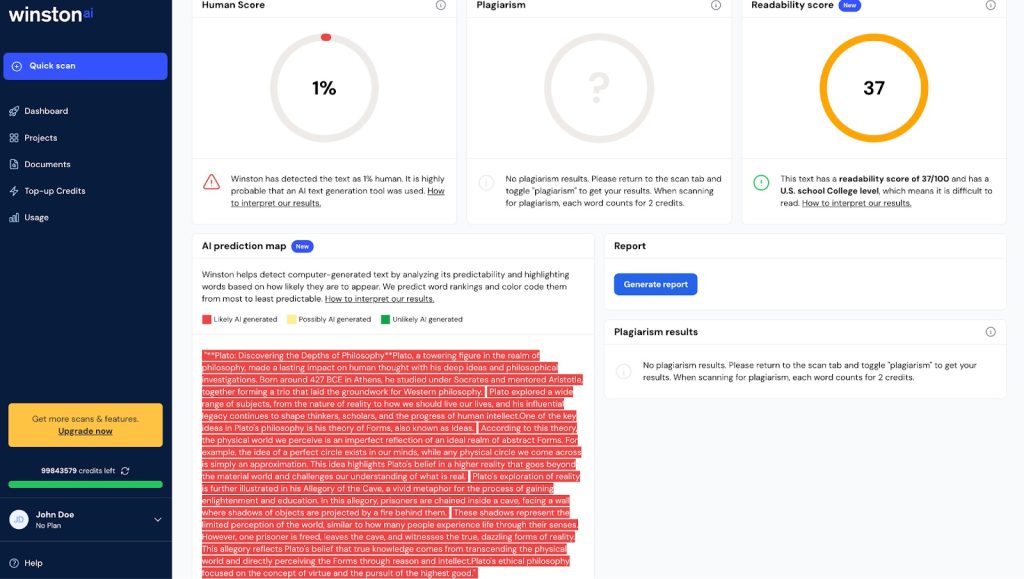
In all fairness, we also wanted to test it on another AI writing detection tool to see if perhaps, we’d have more luck. So we tried the new content on Huggingface’s free tool, and we found that it assessed it as “Real”, or human.

AI Text Converter
This free tool is really simple to use, there is no need to even create an account to begin using their Humanizer. We ran the exact same ChatGPT output we used on the other tools to see how it would look.

Within a few seconds, this platform re-wrote our content in a more “human” way. We immediately put it to the test with Winston AI and found that it was flagged as only 6% human.

As we did for the other tools, we ran the output through HuggingFace’s ChatGPT detector to find that it had bypassed it also.
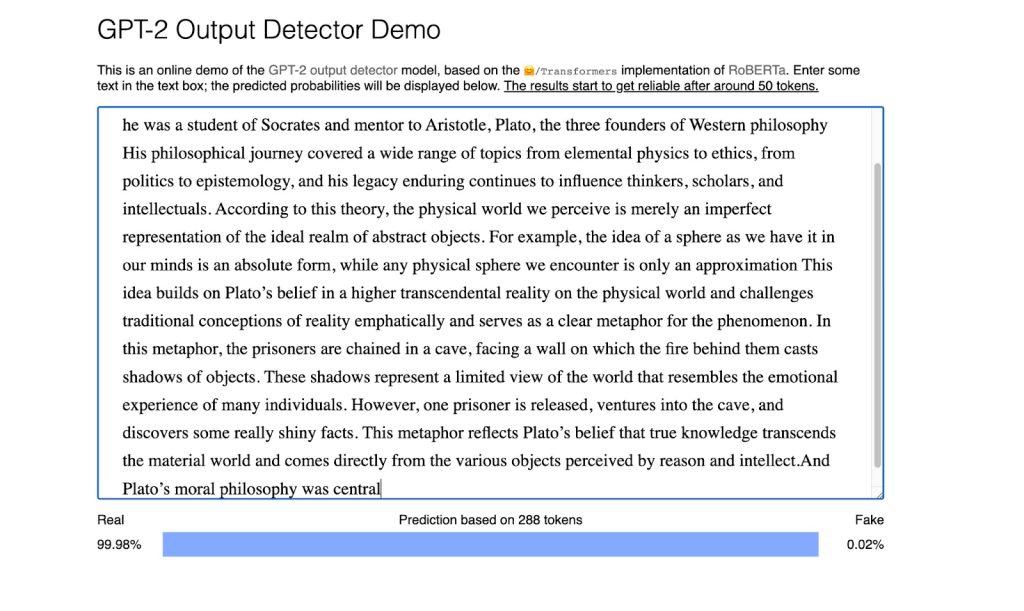
Conclusion
After testing several popular AI humanizing tools on the market, it’s clear that while they can sometimes bypass basic AI detectors like HuggingFace, more advanced systems like Winston AI are still able to reliably detect AI-generated content even after it has been rewritten. Though these tools claim to make AI output undetectable, they fail when put to the test against state-of-the-art AI detection systems. While AI humanizers may succeed in fooling some basic detectors in the short term, as AI detection systems continue to advance, their effectiveness will likely diminish. For now, advanced AI detectors remain superior at identifying synthetic content, but the cat-and-mouse game between generators and detectors will likely continue as both sides evolve new techniques.
FAQ
AI text humanizers are tools that take text generated by AI systems like ChatGPT and rewrite it in an attempt to make it seem more human and bypass AI detection systems.
They use natural language processing techniques to analyze the AI-generated text and paraphrase it, change wording, and alter sentence structures to disguise its synthetic origins. The goal is to fool AI detectors into thinking the content was written by a human.
In some cases they may succeed in bypassing basic AI detectors, but more advanced systems like Winston AI are easily able to identify AI text even after it has been processed by humanizers.
Many students and writers are using AI to generate content quickly. Humanizers allow them to try to disguise the AI origins to bypass plagiarism checks by teachers or analysis by publishers.
There are debates around ethically using AI humanizers. Critics argue they can be used to disguise plagiarism and synthetic content. But others believe they have legitimate uses, like improving grammar and flow of AI text.



